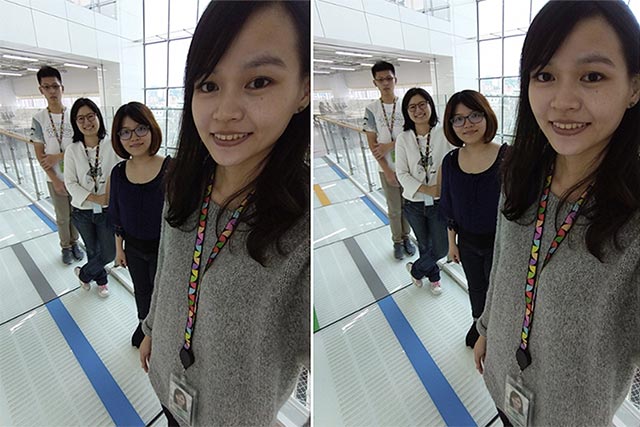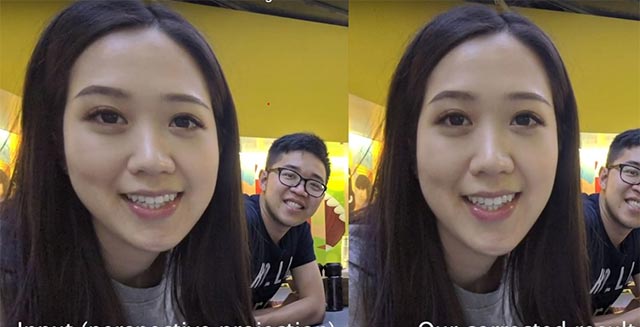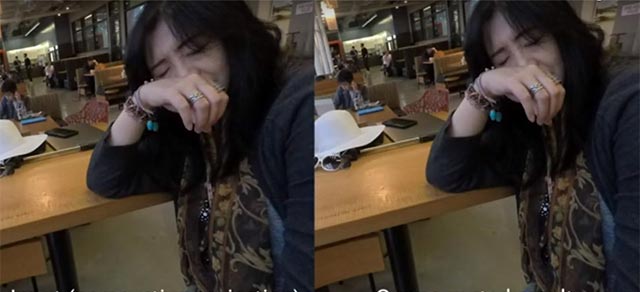Google successfully developed facial deformation algorithms, making selfie images can achieve high accuracy
In a recently published study, it was discovered that as many as 93 million selfies were uploaded to social media every day. Take a more specific example with social networking sites sharing Instagram photos, every 10 seconds, there are 10 selfie images posted on this platform. It shows that selfie photos are becoming more and more popular elements on social networks.
Of course this research is not just for 'fun'. All relevant data has been taken by smart phone manufacturers to create more selfie camera systems. All compete to create the best quality products to dominate the market and that is the positive side of competition.
- Leaking image of Pixel 4: Finally, Google also 'suffered' with multi-sensor camera cluster?
Indeed, perhaps there is no need to be too knowledgeable about the smartphone market, you can easily realize that manufacturers are becoming more and more interested in selfie cameras: More 'dots' , more technology, more advanced features, and more, more sensors. However, the current selfie camera system on the smartphone, even if it is of quality, contains an uncomfortable weakness that cannot be overcome, it is impossible to preserve the exact proportion of the photographer in the photo. photo, or can you understand that your face in selfie has been 'distorted' compared to reality. The problem with 'headache' manufacturers is that this weakness cannot be solved by using more 'dots' sensors.
- The self-sync feature between Photos and Drive will stop working from July 10
 The "face distortion" phenomenon in selfie
The "face distortion" phenomenon in selfie
However, this may soon change thanks to researchers' achievements at Google. Google's team, along with experts from the Massachusetts Institute of Technology (MIT), has successfully developed a face deformation algorithm for selfie camera systems.
The study was named by scientists: 'Distortion-Free Wide-Angle Portraits on Camera Phones' (take a short shot of unpopular wide-angle portraits on phone cameras), mainly discussing a technique the math that they have developed as well as shed some light on how it solves the problem of face distortion in selfie camera photos. Here's what the paper says about this new algorithm:
'By providing a portrait photo as input data, we have built the problem around how to optimize and create an algorithm that identifies local adaptive content and links. It is suitable for stereoscopic projection of facial areas, while seamlessly developing with perspective views on the background. Our new algorithm can effectively and reliably represent a large group of objects in the image. The proposed algorithm is fully automated and works at the same rate of interaction on mobile platforms. We have demonstrated promising results on a series of FOVs (see and receive range on electronic sensors through lens systems) from 70 degrees to 120 degrees. "
- Stadia - Google's Chrome browser platform launched in November in 14 countries, supporting 31 games

 Compare results between input and after images by algorithmic processing
Compare results between input and after images by algorithmic processing
It's great to see smart phone manufacturers particularly excited about the new algorithm of Mountain View giant as soon as the first information is released. However, because Google is a major factor in developing algorithms, it is likely that they will be the first to use it on their commercial products, specifically Pixel smartphones. In the future, creating a competitive advantage is not small in the smartphone market which is already 'stuffy'.
- Browsers using Chromium kernel are not affected when Google disables ad blocking utilities
The video describes the work of Google and MIT scientists
 Harry Potter: Wizards Unite, an interesting AR game to fix the release date
Harry Potter: Wizards Unite, an interesting AR game to fix the release date Microsoft officially revealed the next-generation Xbox with many improvements not to be missed
Microsoft officially revealed the next-generation Xbox with many improvements not to be missed The world's most complicated maid robot dog will be released later this year
The world's most complicated maid robot dog will be released later this year A company claims to recycle 100% of the materials that make up Li-ion batteries
A company claims to recycle 100% of the materials that make up Li-ion batteries Amazon will soon deploy an unmanned aircraft delivery project
Amazon will soon deploy an unmanned aircraft delivery project WWDC 2019: Apple officially unveiled the Mac Pro 2019, a new, more powerful design that starts at $ 5,999.
WWDC 2019: Apple officially unveiled the Mac Pro 2019, a new, more powerful design that starts at $ 5,999.